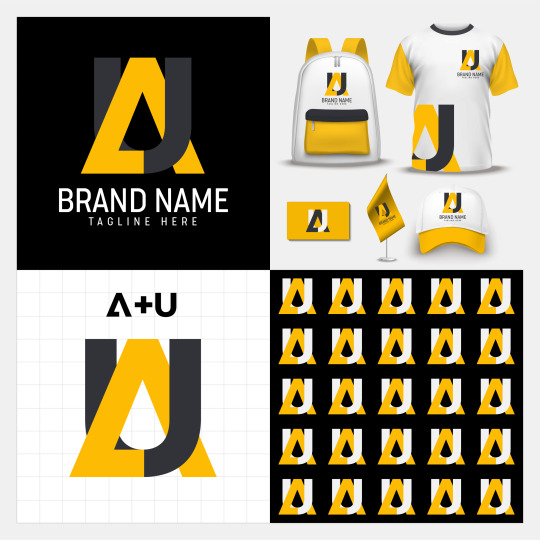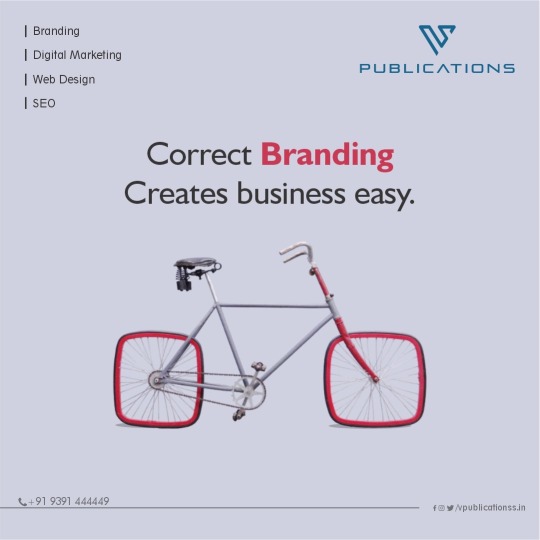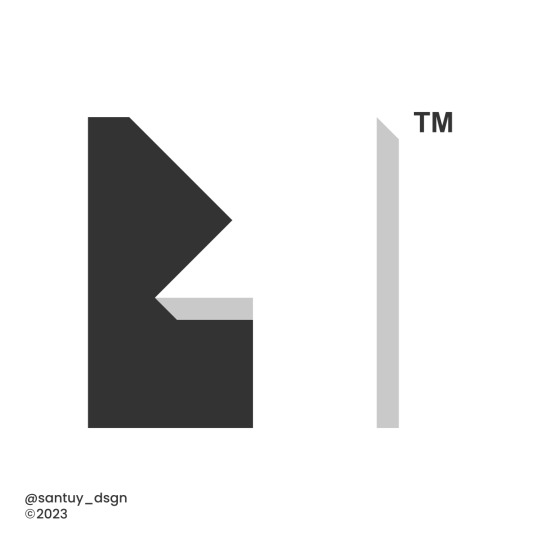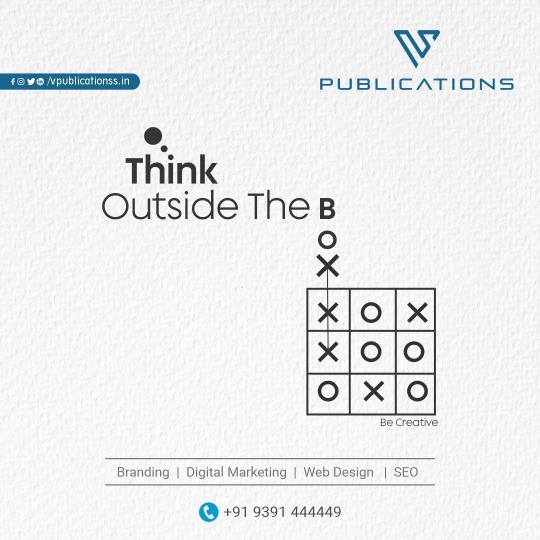#brandmark
Explore tagged Tumblr posts
Text

#logo#logodesigner#logomaker#logoinspiration#creative#creativelogo#graphicdesign#graphicdesigners#brand#branding#brandguidelines#brandidentity#brandmark#cuplogo#coffee#coffeeshop#café#food#foodlogo#restaurantes#tea#cup#flycoffee#bird#instgram#behance#dribbble#design_house111
2 notes
·
View notes
Text

Your brand is your bike: Don't get stuck with square tires!
Imagine cruising on a bicycle down the road on a sunny day, feeling free... Except your tires are squares. Bump, bump, bump goes your ride, every turn a struggle. That's what incorrect branding feels like for businesses in today's digital landscape.
V Publications knows the road to success, and our team works as the expert mechanics to tune your brand for a smooth ride.
We understand that branding isn't just a logo and tagline; it's the story you tell, the emotions you evoke, and the connection you build with your audience.
Call us to get your branding right!
Mobile : 093914 44449
Website : https://vpublicationss.in
#branding#brandingtips#brandingphotos#brandingdesign#brandingagency#seo#BrandingServices#brandinfluencer#brandingstrategy#brandingidentity#digitalmarketing#brandinglogo#brandingphotographer#brandmark#vpublications
2 notes
·
View notes
Text

M1 monogram logo Concept
#logo#logos#icon#illustrator#design#designer#identity#vector#logodesigner#branding#logoinspiration#simple#best#brandmark#logomark#mark#logomaker#graphicdesign#designinspiration#photooftheday#picoftheday#logotype#flatdesign#awesome#typography
3 notes
·
View notes
Text
Celebrate your creative journey
🎨✨ Use Piksbazaar to let your creativity run wild! As we turn your concepts into breathtaking works of art, celebrate your creative journey. Come along and let your creativity run wild! 🌟 We can be reached at www.piksbazaar.com or by phone at +91 97111 45379. Together, let's work some magic! 🐰💖

#Illustration#Art#CreativeJourney#Piksbazaar#logo#logos#icon#illustrator#design#designer#identity#vector#logodesigner#branding#logoinspiration#simple#best#brandmark#logomark#mark#logomaker#graphicdesign#designinspiration#photooftheday#picoftheday#logotype#flatdesign#typography
1 note
·
View note
Text






Vertex Overlook: A Visionary Brand Mark Elevating Real Estate Excellence
"Crafted with precision and a vision of excellence, the Vertex Overlook logo captures the essence of sophistication and trust in real estate. The abstract 'V' merges seamlessly with a rising sun, symbolizing progress, potential, and a view from the top, a perfect reflection of their slogan 'The Peak of Real Estate Solutions.' A blend of modern lines and sleek gradients ensures that this brand mark stands tall, setting a professional yet approachable tone across all platforms."
To visit full slide project: https://www.behance.net/sadekulsayad
#Branding#VsualIdentity#CustomLogo#BrandMark#CreativeDesign#ModernLogos#LogoArt#BusinessIdentity#IconicLogos#DesignStudio#MinimalistDesign#LogoConcepts#BrandCreation#UniqueLogos#LogoInnovation#ProfessionalBranding#SignatureDesign#IdentityDesign#LogoInspiration#DigitalDesign#ElegantLogos#CustomBranding#CreativeBranding#LogoEvolution#ArtisticLogos
0 notes
Text
Leveraging the Power of Logos: Enhancing Brand Identity and Consumer Trust
1.Why use logos?
Logos play a crucial role in the realm of business as they serve as a visual representation of a company's core values, vision, and identity. A well-crafted logo not only acts as a symbol of recognition but also encapsulates the essence of a brand, making it instantly recognizable to consumers. Through strategic design elements, color schemes, and typography, a logo can effectively convey the personality and uniqueness of a business to its target audience. In a competitive market landscape, a strong logo can set a company apart from its competitors, establishing credibility and trust with customers. In addition, logos also act as a powerful marketing tool, aiding in brand recognition and recall. A visually appealing and cohesive logo can leave a lasting impression on consumers, fostering a sense of familiarity and loyalty towards a brand. By consistently incorporating the logo in various marketing materials, products, and digital platforms, businesses can reinforce their brand identity and create a strong visual presence in the market. Ultimately, a well-designed logo is not just a symbol but a strategic asset that can significantly impact a company's success and growth trajectory.
2. What is a trademark vs. logo?
In the legal realm, trademarks hold significant importance as they provide companies with exclusive rights to protect their brand identity and prevent unauthorized use by competitors. By registering a trademark, a company can establish a strong foundation for its brand recognition and reputation in the market. This not only safeguards the company's intellectual property but also enhances consumer trust and loyalty towards the products or services associated with the trademark.
On the other hand, logos act as the visual face of a trademark, embodying the brand's essence and values in a single, recognizable image. A well-designed logo has the power to communicate a company's identity and establish an emotional connection with consumers. It serves as a powerful tool for brand recall and differentiation in a crowded marketplace. Both trademarks and logos work in harmony to create a cohesive brand image that resonates with customers and sets a company apart from its competitors.
3. How to present a final logo?
Presenting the final logo marks a pivotal moment in the design process, serving as the culmination of meticulous planning, creativity, and strategic thinking. This visual representation of a brand's identity encapsulates its essence and values, making it imperative to showcase it with the utmost professionalism and attention to detail. When unveiling the final logo, it is essential to present it in various formats to provide a comprehensive view of its versatility and adaptability. Displaying it on a clean white background, integrating it into mockups of business cards or signage, and demonstrating it in both color and black and white versions allows stakeholders to envision the logo in real-world applications. Moreover, offering a concise yet insightful explanation of the design concept behind the logo can shed light on the creative process and the symbolism embedded within the visual elements. This narrative should articulate how the logo embodies the brand's core values, communicates its unique personality, and resonates with its target audience. Encouraging open dialogue and feedback during the presentation fosters collaboration and ensures alignment with the client's vision, ultimately leading to a final logo that not only meets expectations but also effectively conveys the desired message to the intended audience.
4. Do logos increase sales?
Logos are not merely symbols; they are the visual representation of a brand's identity and values. The importance of a well-crafted logo cannot be overstated in today's competitive business landscape. A carefully designed logo serves as the cornerstone of a company's branding strategy, helping to establish a strong visual identity that resonates with consumers. It is through the logo that a brand communicates its unique story, values, and promises to the target audience. A well-designed logo can evoke trust, credibility, and loyalty in consumers, ultimately influencing their purchasing decisions and driving sales. Research has consistently shown that companies with strong logos tend to outperform their competitors in terms of brand recognition and customer loyalty. A visually appealing and memorable logo can create a lasting impression in the minds of consumers, making it easier for them to recall and differentiate a brand from its competitors. Furthermore, a well-designed logo can evoke positive emotions and associations with a brand, further solidifying its place in the minds of consumers. In today's fast-paced market, where consumers are bombarded with countless choices, investing in a professional logo design is not just a smart marketing strategy but a crucial step towards establishing a strong brand presence and driving sales growth.
5. What is a brand mark?
A brand mark serves as a visual representation of a company's values, mission, and offerings. It goes beyond a mere logo, embodying the essence of the brand in a concise and impactful manner. By encapsulating the brand's identity into a single symbol or design, a brand mark becomes a powerful tool for instant recognition and recall among consumers.
Its simplicity and uniqueness set it apart from competitors, allowing the brand to carve out its own identity in the market. In today's competitive business landscape, a well-crafted brand mark is more crucial than ever. It is not just a visual element but a strategic asset that can shape consumer perceptions and drive brand loyalty. By investing in a strong brand mark, companies can establish a cohesive brand identity that resonates with their target audience, ultimately leading to increased brand awareness and differentiation. In essence, a brand mark is the cornerstone of a brand's visual identity, playing a pivotal role in shaping its reputation and positioning in the marketplace.

0 notes
Text
#branding#Nikes#VersaceLogo#Brandmark#whitelabel#BrandIdentity#CompanyLogo#UXDesign#web development#seo
0 notes
Text








Succesful Marketing Tips For Brand Succes
#brands#brandsucces#branding#brandmark#brandingtips#brandingtips101#brandinfluencer#branded#socialmediainfluencer#socialmediainfluencers#socialmediainfluencermarketing#marketingautomation#aitools#personalbranding#socialmediamarketingstrategist#socialmediamarketing#brandingsuccess#marketingsuccess#successfulmarketing#brandingstrategy#brandingstrategist#contentstrategist#contentstrategytips#socialmediastrategist#socialmediasuccess#contentcreationtips#socialmediaengagementtips#onlinemarketing#usdjahid
0 notes
Text
Branding Mastery: How Personalized Labels Boost Your Company's Image
In today's competitive market, standing out is essential for any business. Custom labels play a crucial role in this endeavor by providing a unique and professional look to your products. With brand printing services, you can create labels that not only represent your brand’s identity but also capture the attention of potential customers.
Custom labels offer endless possibilities for creativity. From selecting colors that align with your brand to designing eye-catching graphics, the right brand printing services can help you achieve a cohesive and appealing product presentation. Moreover, high-quality labels convey a sense of professionalism and trustworthiness, which can significantly enhance your brand's reputation.
Investing in brand printing services ensures that your labels are not only visually appealing but also durable and functional. Whether you need waterproof labels for beverages or scratch-resistant labels for electronics, the right service can provide solutions tailored to your needs. Ultimately, custom labels crafted through top-notch brand printing services can make a lasting impression, setting your products apart from the competition and elevating your brand to new heights.
#brand#printing#brandidentity#printingservices#brandmark#brandingservices#branddesigners#.#Created by Inflact Hashtags Generator
0 notes
Text

#logo#logodesigner#logomaker#logoinspiration#creative#creativelogo#graphicdesign#graphicdesigners#brand#branding#brandguidelines#brandidentity#brandmark#cuplogo#coffee#coffeeshop#café#food#foodlogo#restaurantes#tea#cup#flycoffee#bird#instgram#behance#dribbble#design_house111
1 note
·
View note
Text

#logo#logodesigner#logomaker#logoinspiration#creative#creativelogo#graphicdesign#graphicdesigners#brand#branding#brandguidelines#brandidentity#brandmark#cuplogo#coffee#coffeeshop#café#food#foodlogo#restaurantes#tea#cup#flycoffee#bird#instgram#behance#dribbble#design_house111
2 notes
·
View notes
Text

Tired of blending in with the endless feed? Want your brand to break free from the digital noise and make audiences ROAR with excitement? Then ditch the cookie-cutter marketing and embrace the power of thinking outside the box!
This is where V Publications comes in, your secret weapon for marketing that's anything but ordinary. We don't just post and pray; we strategize, analyze, and execute campaigns that make your brand the talk of the town.
Don't let your online presence be a whisper! Partner with V Publications and amplify your brand story like never before!
Mobile : 093914 44449
Website : https://vpublicationss.in
#branding#brandingtips#brandingphotos#brandingdesign#brandingagency#seo#BrandingServices#brandinfluencer#brandingstrategy#brandingidentity#digitalmarketing#brandinglogo#brandingphotographer#brandmark#vpublications
2 notes
·
View notes
Text

Set your business up for long-term success with a brand strategy & marketing plan that will bring your competitive positioning to life.
>> Branding & Rebranding
>> Brand Naming & Taglines
>> Positioning & Messaging
>> Brand Story & Purpose
>> Logo Design
>> Brand Identity Design
>> Brand Style Guides
>> Branded Touch Points
DM for your project - [email protected]
WhatsApp: 01571-391936
Don't forget to like our Facebook page to stay up-to-date on our latest promotions and free services!
#LogoDesign
#BrandIdentityDesign
#BrandStyleGuides
#branding
#brandingagency
#onelineart#illustration#design#artists on tumblr#line art#fashion#painting#logo#brandingcompany#marketing#branding#digital marketing#business#seo#ecommerce#comics#art#brandmark#brandfashion
0 notes
Text

Event details: 1.17-1.19 Brand Day-Blackview Up to 70% off Ship to: TOTAL&Countries EXCLUDING: RU, UZ, AM, KZ, TJ, BY, MD, AZ, TM, KG, GE Promotion Period: 17-01-2024 - 19-01-2024 👇
#Aliexpress#BeGouriStore#BRANDDAY#brandday#branddays#branddaysale#brand#BrandNew#branding#brandmark#branddesign#brandstrategy#brandidentity#brandawareness#brandingdesign#brandambassador#blackview#blackviewworld#BlackviewSHARK8#BlackviewA200Pro#upto70off#bl80000#BL9000#BV9300#bv9300pro#world#worldwide#worldwideshipping#WorldPremiere
0 notes
Text

Crafting logos that tell your brand's story with every curve and color. ✨ From bold and modern to elegant and timeless, let your logo leave a lasting impression. Your brand's identity, beautifully designed. 🌟
Get an custom logo: https://rb.gy/qpuwk4
#Branding#VsualIdentity#CustomLogo#BrandMark#CreativeDesign#ModernLogos#LogoArt#BusinessIdentity#IconicLogos#DesignStudio#MinimalistDesign#LogoConcepts#BrandCreation#UniqueLogos#LogoInnovation#ProfessionalBranding#SignatureDesign#IdentityDesign#LogoInspiration#DigitalDesign#ElegantLogos#CustomBranding#CreativeBranding#LogoEvolution#ArtisticLogos
0 notes